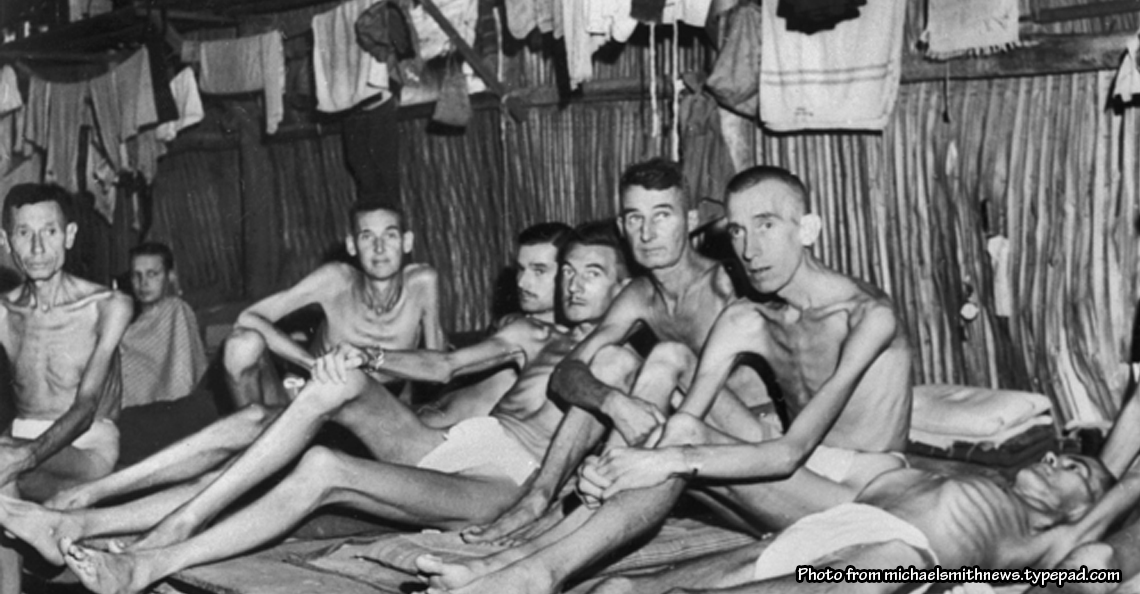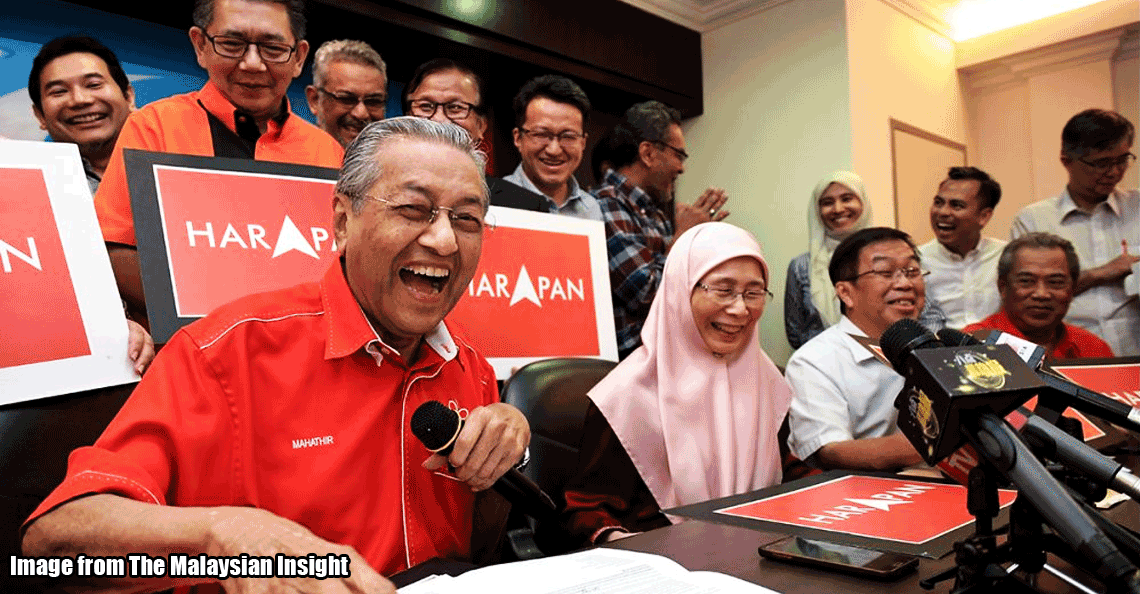In WW2, 176 Sabahans were brutally massacred in this park. Here’s what happened.

- 522Shares
- Facebook482
- Twitter2
- LinkedIn5
- Email9
- WhatsApp24
[If you’d like more of these historical pieces, you can join our HARI INI DALAM SEJARAH Facebook group.]
Malaysia’s history had seen four different countries come in and boss its people around, but perhaps none of them had been as memorable as the Japanese during the three years they’ve been here. While younger generations today might remember them as bicycle bois or typical school ghost #5, the Japanese occupation had been a very bloody affair.
In Sabah, at least, there are three memorial parks established because of their atrocities: one in Sandakan, one in Kundasang, and one in Petagas, just across the road from the Kota Kinabalu Airport. While the first two are to remember the victims of the Sandakan Death Marches (which we wrote about before here), the one in Petagas is for the fallen from the Jesselton Uprising/Revolt, an event which eventually led to another event called the Jesselton Massacre.
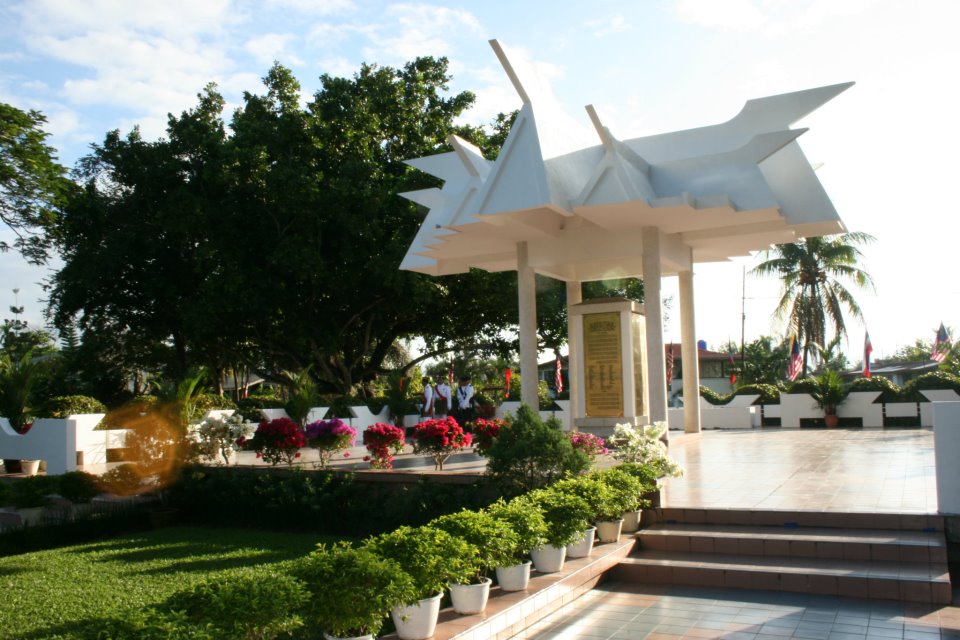
Besides being a particularly nasty piece of history, this event is quite interesting as it is famously portrayed as one of the few anti-Japanese movements in Southeast Asia that is participated by various races, and led entirely by civilians. According to Danny Wong Tze Ken, an expert of the subject,
“The multi-ethnic nature of the resistance is probably the most important legacy and for this reason, the Kinabalu Guerillas and the rebellion were remembered and commemorated first by the returning British colonial administration, and sustained after independence,” – Danny Wong, as reported by New Sabah Times.
Given that most of the people who participated in the uprising were civilians, you might find it impressive that…
They initially won against the Japanese, and retook Jesselton for three days
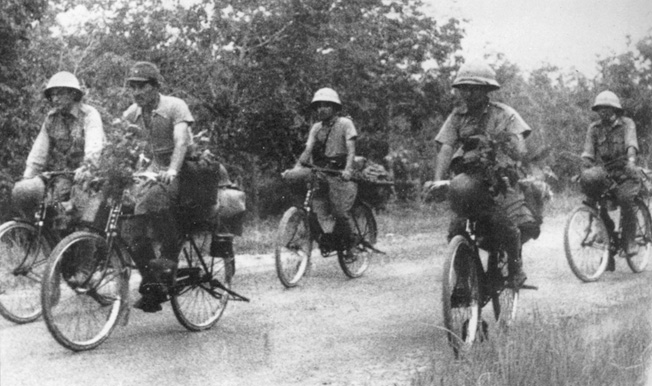
The year was 1943. By then, Sabahans have experienced Japanese rule for over a year, but due to the ongoing war between China and Japan, it was particularly hard for the Chinese people. They were forced to pay huge sums of money to the Japanese as penalty for supporting the Chinese government, and the introduction of a Japanese colony currency (the infamous banana money) severely affected the Chinese merchants.
“The Chinese merchants were the main victims. Goods were purchased with the worthless Japanese military currency. While the currency was initially accepted as it was forced upon the people, it was not long before it was despised and discredited as a mode of exchange,” – Danny Wong, as quoted by the Star.
Of course, the Japanese occupation weren’t exactly fun to most of the other races as well, but they seem to be persecuted less. Anyway, at around that time a young Chinese man by the name of Albert Kwok became the leader of a group of people called the Kinabalu Guerrillas, and with the goal of overthrowing the Japanese and eliminating their collaborators, the guerrillas were joined by people from all walks of life, including ‘farmers, fishermen, traders, clerks and ordinary men who wanted to defend their community’.
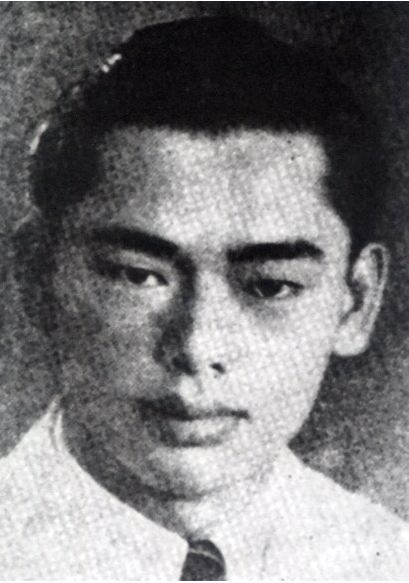
Based on academic papers written about the matter, it would seem that the fighting force was predominantly made of Chinese people, but it was participated by other races in Sabah at that time as well, like the Bajaus, Binadans, Suluks and Dusuns, making it a multiracial affair.
Anyway, on the eve of 10th October 1943, the Kinabalu Guerrillas launched their attack, and despite mostly being only equipped with weapons like parangs and spears, they managed to kill 47 Japanese soldiers and civilians between Tuaran and Jesselton.
They even managed to take control of Kota Belud for two days, and for a moment it was the guerrillas’ complete victory. However, based on the writings of Ismail Abbas and K Bali, during the short victory there were a bit of unease among the natives as the Chinese members of the guerrilla force allegedly became tyrants, so many of them dropped out and returned to their homes. Regardless of that, the victory didn’t last very long…
The Japanese retaliated, and they retaliated hard

On the 14th October, four days after the revolt started, Japanese reinforcements came first in the form of an aircraft which laid waste to all the villages north of Jesselton. Every building in Kota Belud was razed to the ground, and there was much destruction and casualties at Tuaran, Menggatal, Inanam and surrounding areas. The Japanese also brought in their military police, the Kempeitai, from Kuching, and although the guerrillas fought back in skirmishes here and there, on the whole they were severely outmatched.
The remaining Kinabalu Guerrillas were forced to break up into small groups and retreat into the interior, after which they became easy targets for the Japanese. Not used to life in the jungle, many were arrested trying to find food near villages, and those at the point of exhaustion and starvation surrendered themselves. The Japanese were intent on completely quashing the resistance, however, so a lot of people, whether or not they were part of the revolt, were caught and tortured by the Kempeitai to extract information as part of the Japanese’s punitive expeditions.
In all, about 400 people associated with the uprising were arrested, along with hundreds more suspected of helping the guerrillas or simply sympathizing with them. Those arrested were interrogated at the Kempeitai offices, and while some were eventually released, many were detained and sent to a police barracks and gaol/jail at Batu Tiga, where many died from tortures.
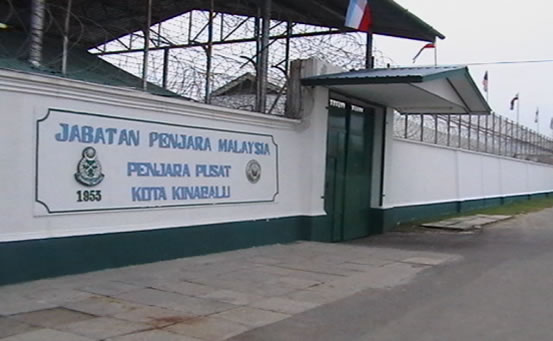
One can only imagine what kind of tortures the arrested Sabahans endured, but an account by a survivor showed how creative the Japanese can get. Besides having a piece of wood hammered into his ear, rupturing his eardrum, he also recounted being force fed some three or four cups of uncooked rice, then had a hose forced into his throat which filled him with water.
“You can imagine the rest. About three or four hours later the pain became excruciating as the rice swelled within the stomach… the pain for about a day and a half was intense. Part of the bowel came out but there was no medical attention. It bled for a while; it was very painful gradually it got better. I managed to push it back by hand. Then the interrogation continued.” – a survivor’s account, from a paper by Arujunan Narayanan, JEBAT 29 (2002).
It was from these tortures that some betrayed the guerrillas’ information to the Japanese, which led to further arrests and killings. Albert Kwok and his men, who were holing up in the Shantung area in Penampang waiting for help from the Allied Forces, probably got their location revealed to the Japanese in this way. The Japanese promptly surrounded the area and issued an ultimatum to Albert Kwok: surrender or the Japanese will kill everyone in the Shantung area.
Not wanting to have the blood of the Shantung area’s population on his hands, as well as not having the resources to fight back, Albert Kwok and his men surrendered to the Japanese on 19th December 1944. They were arrested and taken to the Batu Tiga prison by train.
The Kinabalu Guerrillas were massacred, but it wasn’t the end of suffering for Sabahans

About a month later, the Japanese decided that they needed to make an example of the guerrillas to stop future uprisings by the people, and the Jesselton Massacre came from that. According to a survivor, some of the prisoners in Batu Tiga were forced to sign a document they weren’t allowed to read, which turned out to be confessions of guilt. On the 20th January 1944, Albert Kwok and his men were taken out to the prison compound, and 175 people including him were decided to be leaders of the guerrillas and separated from the rest.
Early next morning, three days before 1944’s Chinese New Year’s eve, they were loaded on to a train and shipped off to Petagas, where they were to be executed. Upon arrival, they discovered that two large holes had been dug in the ground, and they were half filled with water from rain the night before.
Despite the cold and the obvious fate awaiting them, to the men’s credit none of them cried or begged for mercy according to eyewitness accounts. However, their stoicness could have been resignation to their fate, or they were simply numbed and hardened from the Kempeitai’s tortures.
Five men including Albert Kwok were first selected for beheading. They were stripped off their shirts, bound together with a rope and made to kneel in a row in front of the pit. A Japanese officer behind each one then lopped their heads off with a heavy samurai sword, and according to eyewitnesses, it was a gruesome sight: one of the men’s neck was only half-severed. After the main event, the others were ordered to kneel in front of the two large holes, and they were shot at by two machine guns and about ten other small arms.
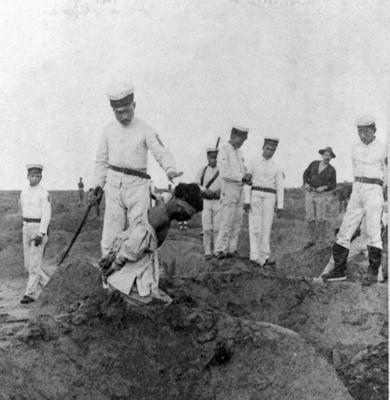
The guerrillas, some still alive, were then dumped into the holes and left there. For about three days, it was said that the groans of the ones who didn’t die can be heard in the nearby village, but no one dared to go near the spot. But not everyone was shot at or beheaded. According to a son of one of the victims, a family friend who was a photographer for the Japanese informed him of his father’s death, and it was an atrocious one.
“My father, before he was executed, was seen in a picture holding his name written in Chinese … the other men were lined up before being shot to death. It would have been different if he had been shot, as he would have died instantly. However, my father was bayonetted in the chest before the gun was forcibly brought downwards to disembowel him,” – Son of a victim, as reported by Daily Express.
After news of the execution got out, an Allied Intelligence report found that the massacre definitely discouraged Sabahans from mounting further attacks on the Japanese. But the Japanese continued their witch-hunt for remaining guerrillas, and the arrests and torturous interrogations continued. Summary executions were also said to happen, and on one occasion, it was said that 189 suspects were executed by firing squad without trial. Others were sent to the Batu Tiga prison to join the remaining prisoners there.
Sometime in February 1944, the Suluks, who lived on islands off the coast of North Borneo, got caught in the Japanese crosshairs. After failing to find a Chinese guerrilla on the island of Mantanani, they arrested 58 Suluk men and took them back to Jesselton, probably for interrogation. They returned to Mantanani two days after that and massacred the women and children left behind.
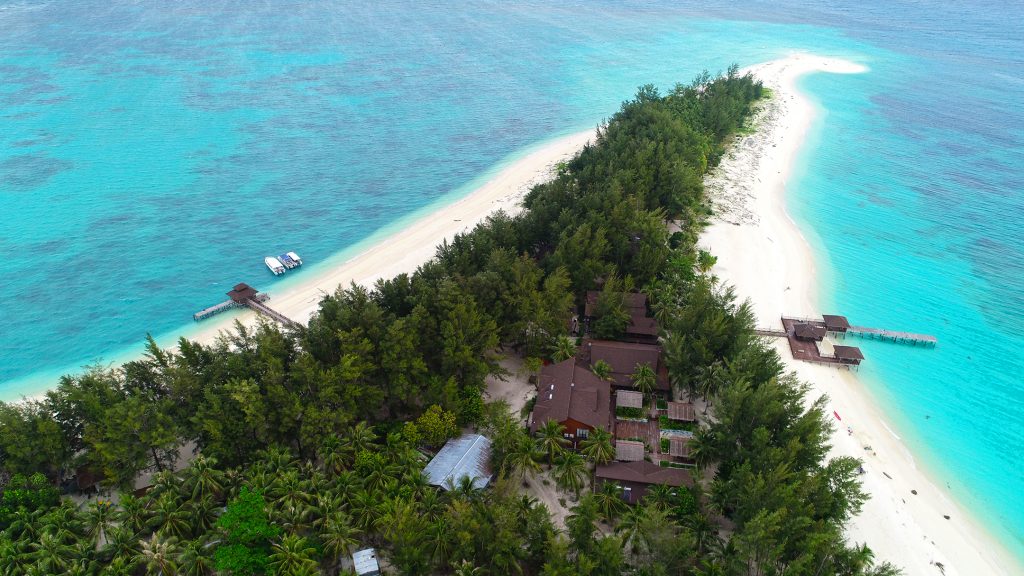
The women and children were stripped of their valuables and money, and were strung together in a line between the island’s mosque pillars, which the Japanese made their headquarters. They were then subjected to machine gun fire. Those who survived that were finished off by revolvers. As for the Suluk men taken away, all of them died within the next few weeks from tortures and starvation.
Because of this, the population of Mantanani fell from 430 Suluks to only 125, and only 20 adult males survived. The island of Dinawan, whose Suluks did not take part in the uprising, got their population of 120 reduced to 54, with no adult males left. This also happened on three other Suluk islands: Mangolum, Sulug and Udar.
As for the remaining prisoners in Batu Tiga, 131 of them, all Chinese, were sent to Labuan for long-term imprisonment. On arrival, they were paraded and humiliated before the Labuan population as a warning, after which they were put to hard labor in public works, with their food and welfare hardly cared for.
Many succumbed to fatigue, malnutrition and illnesses, and most of them succumbed to severe diarrhea from eating coconuts to supplement their diet. Eventually, they can’t work anymore and were left to die slow, painful deaths. Only seven survived when the war finally ended.
The atrocities suffered by the Kinabalu Guerrillas are now remembered every year
After the war ended, a source quoted that out of the 2,400 involved in the revolt, 1,300 died, with the Japanese death toll numbering 1,900. People realized there was a need to care for the war dead and their families then, so Jesselton’s Chinese community got together and established the War Victims Caring Committee. This committee was responsible for the first ever memorial service for the victims of the Jesselton massacre in Petagas, on the 20th January 1946.
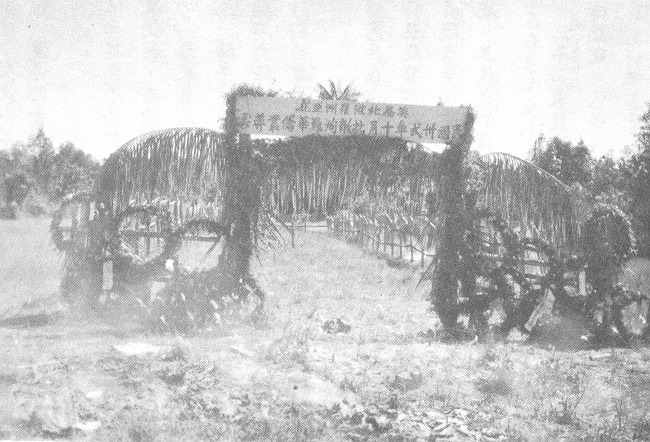
During the memorial service, the community pledged to care for the children of those killed in the massacre, and funeral rites were held at the execution site in Petagas. It was then marked with flowers and an arch made of coconut leaves, bearing the words “British North Borneo Api (Jesselton), Massed Funeral Sites of the Chinese Resistance Fighters of October 1943” in Chinese. Based on the committee’s request, the Colonial Government at that time agreed to observe a Memorial Service Day on the 21st January of every year, and a plaque was later erected on the Petagas site to commemorate the event.
Three years later, the committee decided to bring the remains of those who died in Labuan to Petagas to be interred with their comrades. They managed to recover the remains of more than 90 men, and these were cleaned and interred together in six large burial jars, which later came to rest in Petagas as well. Since then, the colonial government had maintained the Petagas War Memorial, a tradition picked up by the Sabah Government after 1963.
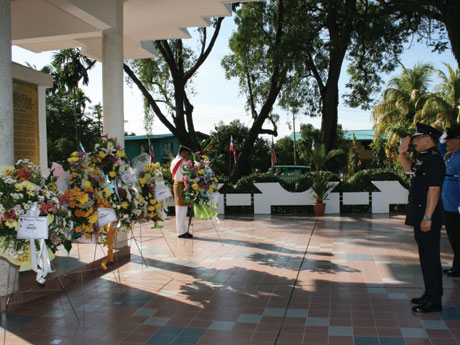
Today, the memorial is said to symbolize heroes whose struggles would be emulated by the people and inspire them to stand up for their rights and beliefs. It is also said to promote national unity among the races, as evident by the text on the epitaph.
“In perpetual memory of those gallant men of all races who, loyal to the cause of freedom were murdered and buried at this place on 21 January 1944 and also those who met their death in the same cause at Labuan and were later buried here.”
[If you’d like more of these historical pieces, you can join our HARI INI DALAM SEJARAH Facebook group.]
If you would like a more in-depth reading, here are some of the main references for this article:
- “The Petagas War Memorial and the Creation of a Heroic Past in Sabah“. Danny Wong Tze Ken, 2007.
- “Japanese War Crimes and Allied Crimes Trials in Borneo during World War II“. Arjunan Narayanan, 2002.
- “The Knights of Bushido: A History of Japanese War Crimes During World War II“. E. Frederick, L. Russel, 2016.
- 522Shares
- Facebook482
- Twitter2
- LinkedIn5
- Email9
- WhatsApp24

